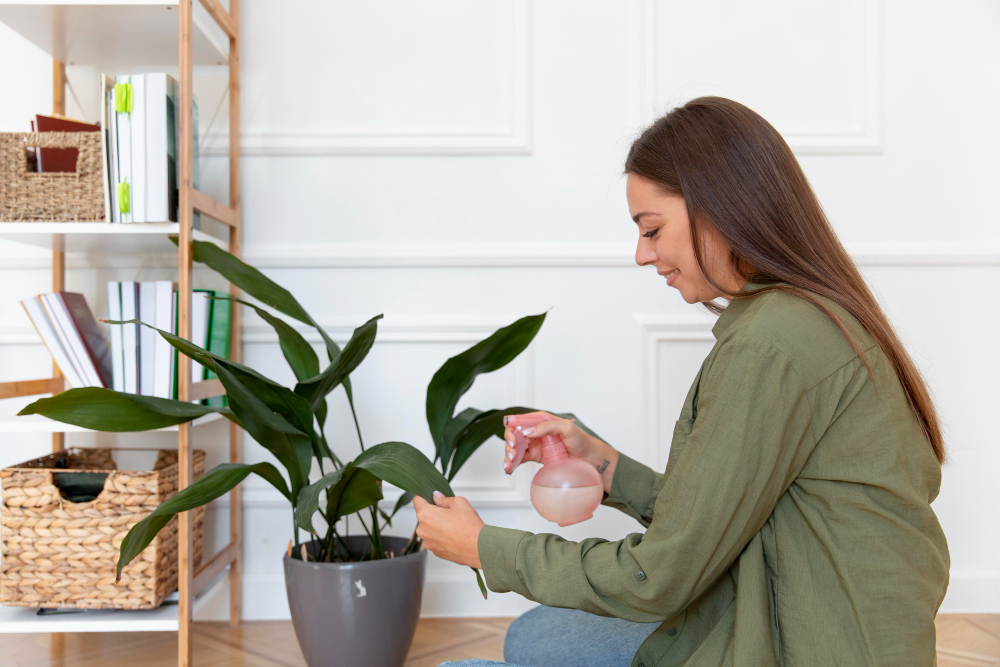
Potted plants and urban living may seem like an unlikely pair, but with the right approach and a few insider tricks, you can transform your Ft. Myers apartment into a flourishing green oasis. Whether you're a seasoned horticulturist or a complete beginner, this guide will help you finesse the art of indoor gardening without breaking the bank. Understanding your plant's needs, choosing the right space to cultivate your garden, and learning effective watering and care methods is key to a successful indoor garden – and it all starts here, right in the heart of your Ft. Myers home.
Apartment gardening has seen a surge in popularity for a variety of reasons. Not only can it enhance the aesthetics of your living space, but it also promotes relaxation and well-being. Taking the time each day to water and care for your plants can be a meditative practice, an important aspect of mindfulness in the hustle and bustle of city living.
In Ft. Myers, Florida, where outdoor space can be limited, the indoor garden is more than a trend; it's a lifestyle. With your unique micro-climate indoors, you have the opportunity to create an environment perfect for a diverse array of plants. All it takes is a little knowledge and a willingness to get your hands dirty.
The key to a successful apartment garden is understanding the individual requirements of your plants. Light, water, and temperature are the holy trinity of plant care. Here's how you can cater to each need without over-extending your budget or your time:
Light is a non-negotiable for plants, as it's crucial for the process of photosynthesis. Apartments in Ft. Myers, even ones with ample natural light, can have tricky shadow patterns due to tall buildings or overcast skies. Understanding where your apartment's "light hotspots" are is crucial.
Understanding which plants thrive on the type of light in your apartment is the first step in ensuring they flourish.
Overwatering is one of the most common killers of indoor plants. Avoid it by:
Plants are sensitive to extreme temperatures and drafts can be as perilous as desert-like dry air inside your apartment.
Learning these cues and practices will help you develop an almost intuitive sense for your plant's water and light needs.
Not all plants are created equal when it comes to being apartment-friendly and budget-conscious. Here's a rundown of plants that are well-suited to life in an Ft. Myers apartment:
Investing in these plants at the start is an investment in your learning curve – they're forgiving of the occasional underwatering or overexposure.
With your plants selected and placed in their appropriate spots, it's time to cultivate your green thumb further. Here are some tips to ensure the longevity of your indoor garden:
Indoor plants benefit from a balanced fertilizer, applied once a month during the growing season. A little goes a long way, so investing in a small bottle should last you for the majority of the year.
Make it part of your routine to spend a little time with your plants. Not only will this allow you to spot issues like pests or disease early, but it also gives you a chance to talk to them. Yes, plants benefit from the carbon dioxide in your breath – and who hasn't had a one-sided chat with their ficus every now and then?
As your plants grow, they may need to be re-potted into a larger container. This promotes healthier root growth and helps prevent becoming root-bound, which can stress the plant.
You don't need to spend a fortune to be an effective plant parent. Here are a few items that will take you from brown thumb to fully-fledged gardener:
The act of gardening, whether on a grand scale or within the confines of your Ft. Myers apartment, is a testament to human ingenuity and capability. We're designed to cultivate, to nurture, and to create – so go ahead, pick up a trinket from a local nursery, propagate a cutting from a friend, or give in to the allure of a colorful potted friend at the farmer's market.
The plants you grow will not only grace your living space with their beauty; they will also serve as a daily reminder of the life and vitality that you're nurturing within yourself. And who knows, maybe you'll even inspire a neighbor or friend to start their own indoor garden. Fort Myers is a city of growth, and your apartment can be a microcosm of that transformation.
If you're ready to take your love of indoor gardening to the next level, Ft. Myers awaits with its range of apartments, offering the perfect canvas for your botanical masterpiece. Sustainable living in our gorgeous Gulf city begins right at home, with a pot, a plant, and a commitment to learning and growing. If you're looking for apartments in Ft Myers, FL, contact Millennium Apartments today to schedule a personal tour.